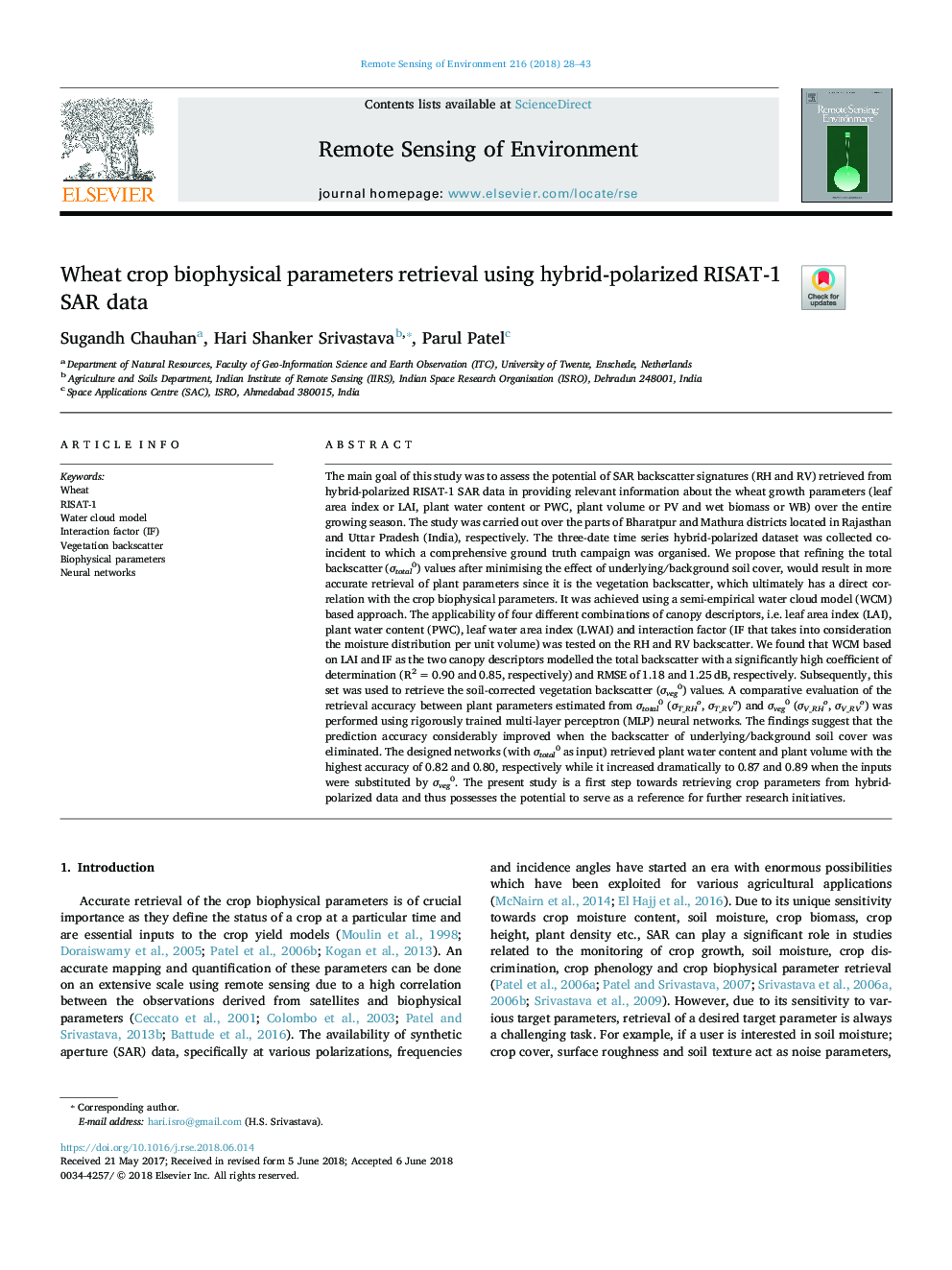| Article ID | Journal | Published Year | Pages | File Type |
|---|---|---|---|---|
| 8866400 | Remote Sensing of Environment | 2018 | 16 Pages |
Abstract
The main goal of this study was to assess the potential of SAR backscatter signatures (RH and RV) retrieved from hybrid-polarized RISAT-1 SAR data in providing relevant information about the wheat growth parameters (leaf area index or LAI, plant water content or PWC, plant volume or PV and wet biomass or WB) over the entire growing season. The study was carried out over the parts of Bharatpur and Mathura districts located in Rajasthan and Uttar Pradesh (India), respectively. The three-date time series hybrid-polarized dataset was collected coincident to which a comprehensive ground truth campaign was organised. We propose that refining the total backscatter (Ïtotal0) values after minimising the effect of underlying/background soil cover, would result in more accurate retrieval of plant parameters since it is the vegetation backscatter, which ultimately has a direct correlation with the crop biophysical parameters. It was achieved using a semi-empirical water cloud model (WCM) based approach. The applicability of four different combinations of canopy descriptors, i.e. leaf area index (LAI), plant water content (PWC), leaf water area index (LWAI) and interaction factor (IF that takes into consideration the moisture distribution per unit volume) was tested on the RH and RV backscatter. We found that WCM based on LAI and IF as the two canopy descriptors modelled the total backscatter with a significantly high coefficient of determination (R2â¯=â¯0.90 and 0.85, respectively) and RMSE of 1.18 and 1.25â¯dB, respectively. Subsequently, this set was used to retrieve the soil-corrected vegetation backscatter (Ïveg0) values. A comparative evaluation of the retrieval accuracy between plant parameters estimated from Ïtotal0 (ÏT_RHo, ÏT_RVo) and Ïveg0 (ÏV_RHo, ÏV_RVo) was performed using rigorously trained multi-layer perceptron (MLP) neural networks. The findings suggest that the prediction accuracy considerably improved when the backscatter of underlying/background soil cover was eliminated. The designed networks (with Ïtotal0 as input) retrieved plant water content and plant volume with the highest accuracy of 0.82 and 0.80, respectively while it increased dramatically to 0.87 and 0.89 when the inputs were substituted by Ïveg0. The present study is a first step towards retrieving crop parameters from hybrid-polarized data and thus possesses the potential to serve as a reference for further research initiatives.
Related Topics
Physical Sciences and Engineering
Earth and Planetary Sciences
Computers in Earth Sciences
Authors
Sugandh Chauhan, Hari Shanker Srivastava, Parul Patel,
